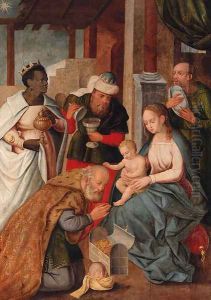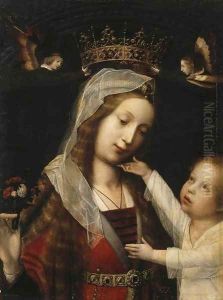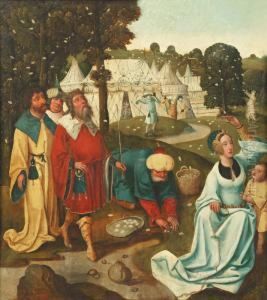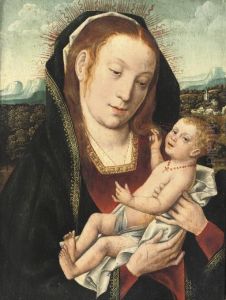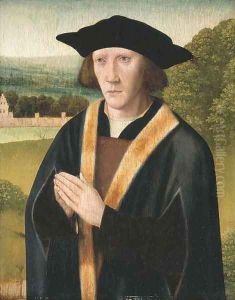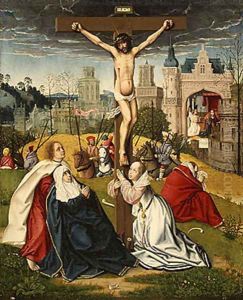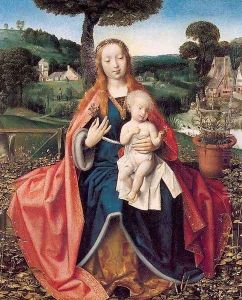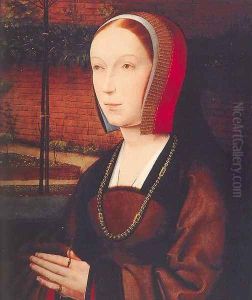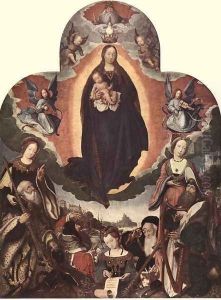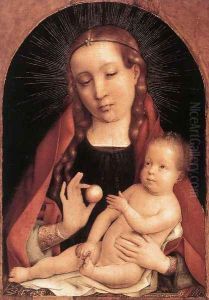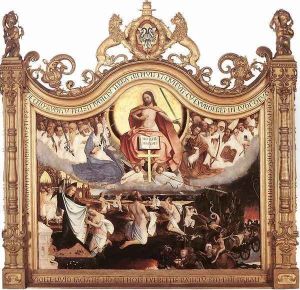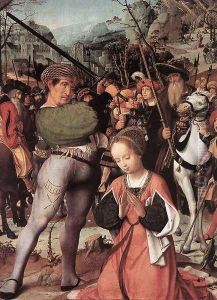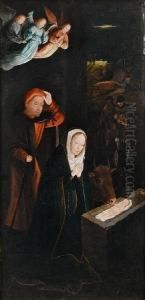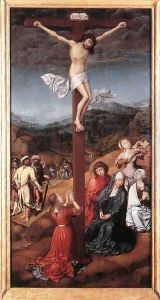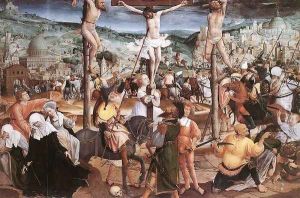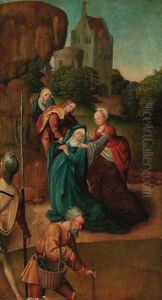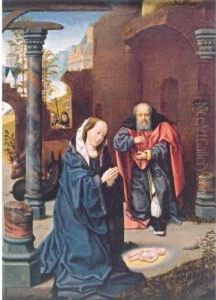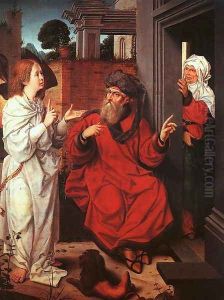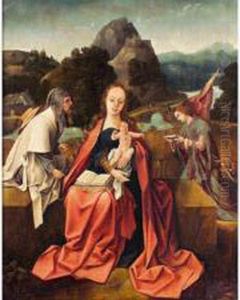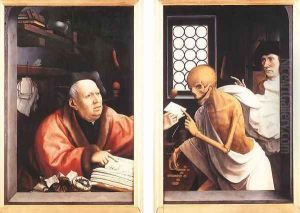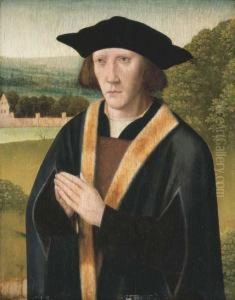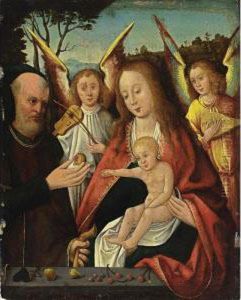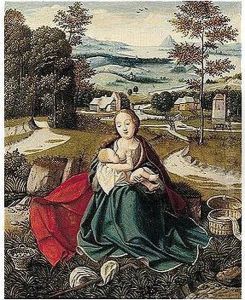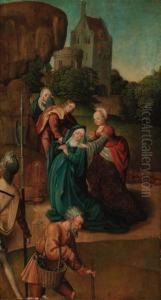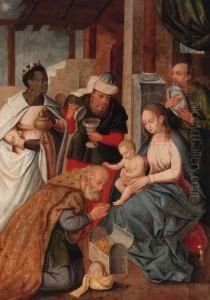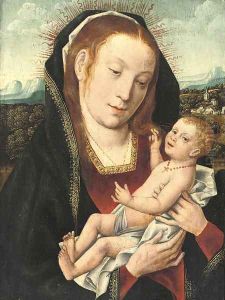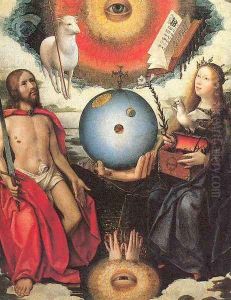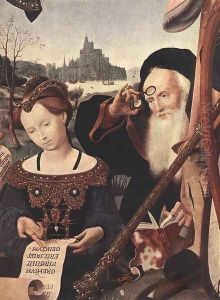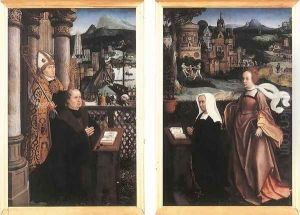Jan Provost Paintings
Jan Provost was a Flemish painter of the Early Netherlandish period, known for his profound influence on the development of Northern Renaissance art. Born in Mons, which is now in modern-day Belgium, around 1465, Provost's early life remains somewhat obscure, but it is believed he received his initial training in art from his father, who was also a painter.
Jan Provost moved to Antwerp, a hub for artists at the time, where he became a master in the Antwerp Guild of St. Luke by 1493. His work during this period shows the influence of prominent artists such as Hans Memling, with whom he might have trained or worked. Provost was noted for his detailed and meticulous approach to painting, particularly in his religious compositions, portraits, and altarpieces.
In 1494, Provost moved to Bruges, where he spent the majority of his career. He married the daughter of the painter Simon Marmion, and they had several children, indicating his successful establishment within the community. In Bruges, Provost became a leading figure in the city's artistic scene, and in 1503, he was appointed as a painter to the city.
His works from this period include the 'Last Judgment' for the Bruges town hall and the 'Legend of St. Ursula' for the Church of St. Donatian. These pieces are characterized by their vivid color palette and complex iconography, which reflect Provost's deep understanding of Catholic symbolism and narrative detail.
Provost's style evolved over the years, showing an increasing interest in the effects of light and shadow, as well as a more emotional and humanistic portrayal of religious subjects. One of his most notable works is the 'Virgin and Child Enthroned with Saints,' which exemplifies his mature style with its serene and delicate figures set against a richly detailed landscape.
Jan Provost's legacy lies in his ability to blend the detail-oriented Northern Renaissance style with a sense of emotion and naturalism. His paintings, while not as widely recognized today as some of his contemporaries, played a significant role in shaping the visual language of the era. He continued to paint and contribute to the artistic community in Bruges until his death in January 1529. His sons, especially Gérard Provost, continued his artistic lineage, albeit without achieving the same level of acclaim as their father.
